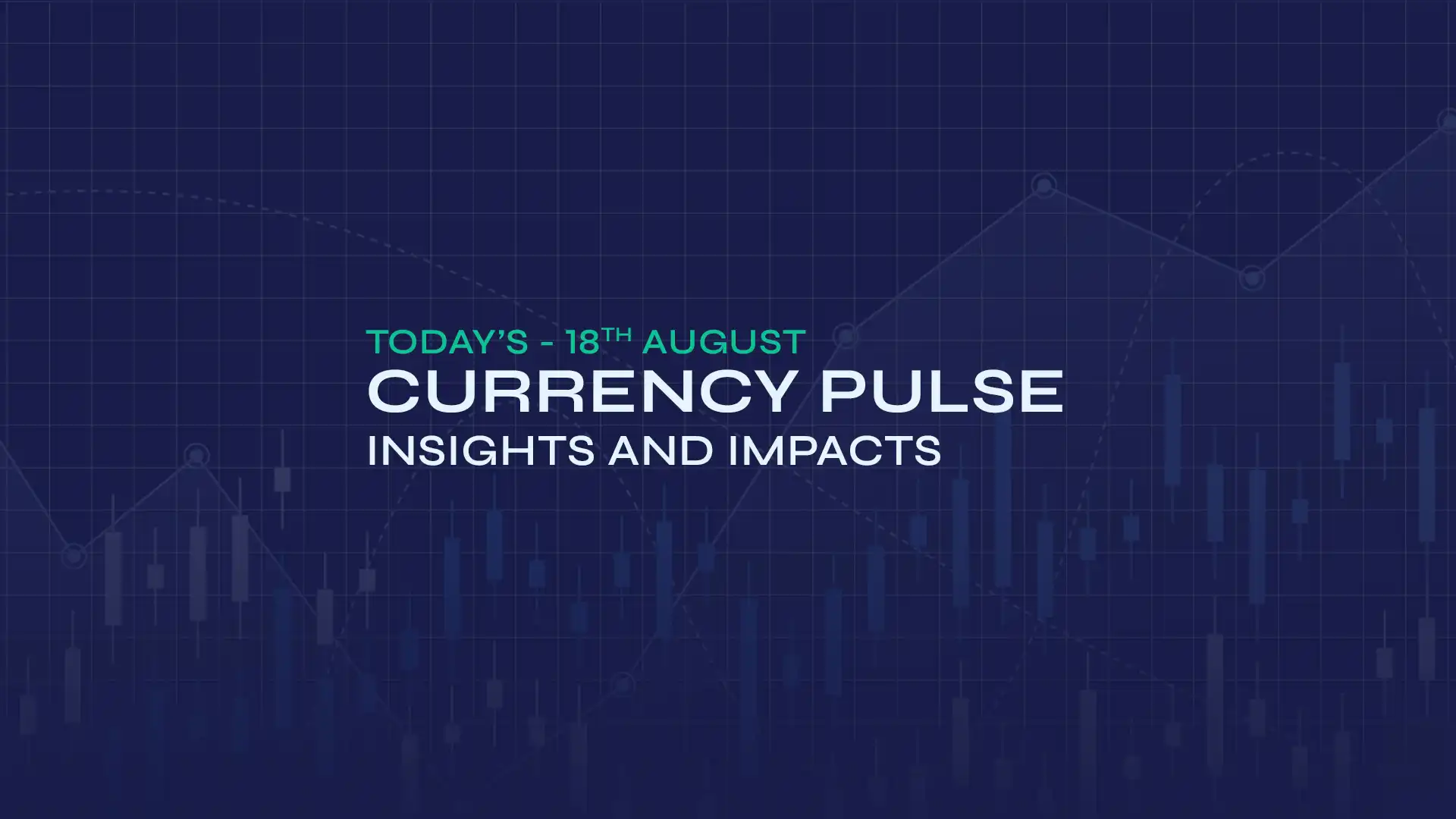GBP/USD struggled near 1.3593, as increased risk aversion, triggered by Trump's unpredictable tariff policies, supported the US dollar. On Tuesday, US President Donald Trump told reporters at a White House cabinet meeting that he intends to impose a 50% tariff on copper imports, though he did not specify when it would take effect. President Trump highlighted his aim to boost domestic copper production and lessen reliance on foreign supplies, as the US currently imports nearly half of its metal, mainly from Chile. The new tariff brings red metal in line with the existing 50% tariffs on steel and aluminium, heightening trade tensions and increasing volatility in the metals market. Furthermore, US Treasury Secretary Scott Bessent stated that the United States has already collected around $100 billion in tariff revenue this year and could see that total rise to $300 billion by the end of 2025, driven by US President Donald Trump's escalating trade measures.
Meanwhile, the pound stabilised amid a calm market mood following a relentless sell-off in UK gilt securities, which occurred after Chancellor Rachel Reeves broke her self-imposed fiscal rules to support a significant reform in welfare spending. Last week, UK gilt yields rose after Reeves announced an increase in the standard allowance for Universal Credit (UC) in the House of Commons, without specifying the funding sources for this additional expenditure. This increase in welfare spending is projected to add £4.8 billion to the government's financial burden by 2029–2030. Regarding monetary policy, traders are growing more confident that the Bank of England (BoE) will cut interest rates in the August policy meeting. UK monthly GDP is expected to have increased by 0.1% following a 0.3% decline in April.
Aside from the trade tariff jitters and the Federal Open Market Committee (FOMC) minutes, the upcoming monthly British GDP and factory data for May will be key drivers for the GBP/USD exchange rate.
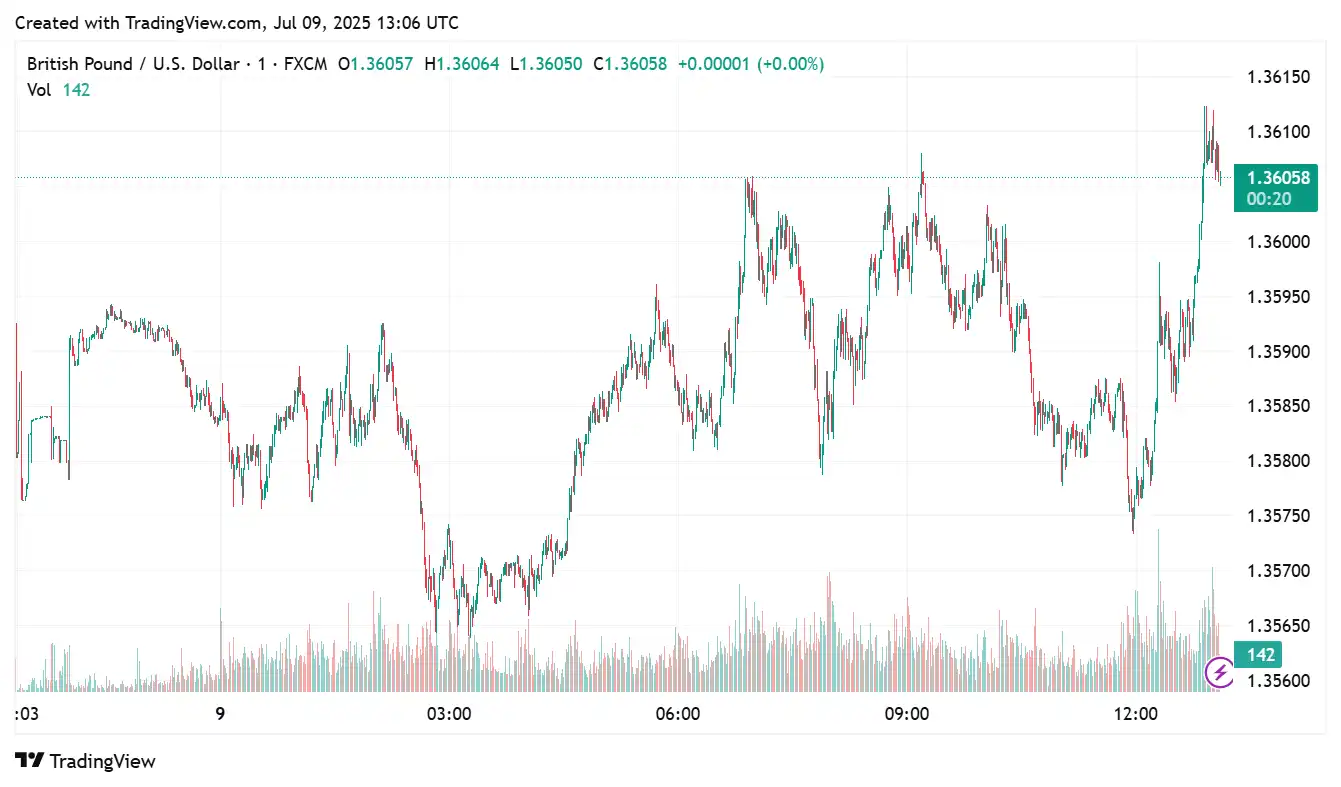
AUD/JPY Subdued Amid Trade Concerns
AUD/JPY weakened near 95.76, amid a cautious market mood following United States (US) President Donald Trump's threat of a series of new tariffs on Tuesday. US President Donald Trump stated on Tuesday that he will introduce a 50% tariff on imported copper and signalled that more sector-specific duties are imminent. Trump also mentioned he would soon implement tariffs "at a very, very high rate, like 200%," on pharmaceutical imports. However, cautious remarks from the Reserve Bank of Australia (RBA) Governor could strengthen the AUD. RBA Governor Bullock also noted that the full impact of the previous 50 basis point rate cuts has yet to be seen. She added that more data and developments are expected at the next meeting. On Tuesday, Australia's central bank kept the Official Cash Rate (OCR) steady at 3.85%, contrary to the widely expected 25 basis point cut in July. RBA Deputy Governor Andrew Hauser stated early Wednesday that the global economy faces significant uncertainty. Hauser was surprised at how markets are shrugging off these concerns and moving forward. He also mentioned that tariff impacts are substantial and likely to slow economic growth. China's Consumer Price Index (CPI) increased by 0.1% year-over-year in June after a 0.1% decline in May, with market expectations at 0%. The monthly CPI fell 0.1%, against the expected flat reading. Additionally, the Producer Price Index (PPI) dropped 3.6% YoY in June, following a 3.3% decline in May. All data came in below market forecasts, with the PPI lower than the expected 3.2%.
On the yen's front, traders now seem convinced that the Bank of Japan (BoJ) will forgo raising interest rates this year amid concerns about the potential economic fallout from US President Donald Trump's 25% tariffs from a new deadline of August 1. Japanese Prime Minister Shigeru Ishiba stated early Tuesday that Japan has not reached an agreement with the United States because the country continues to defend what must be defended. He also added that he will continue dialogue with the US, seeking an opportunity to agree on a deal that benefits both nations. As a result of prior negotiations with the US, Japan was able to prevent a hike in tariffs to 30–35%. Japanese Finance Minister Katsunobu Kato said on Tuesday that he has "no current plans for specific foreign-exchange (forex) discussions with US Treasury Secretary Scott Bessent." Japan's top trade negotiator, Ryosei Akazawa, said on Tuesday that he had a 40-minute phone call with US Commerce Secretary Howard Lutnick. Akazawa added that he agreed to actively participate in trade negotiations.
In today's session, any developments in domestic political uncertainty within Japan and trade tariffs will influence the AUD/JPY exchange rate.
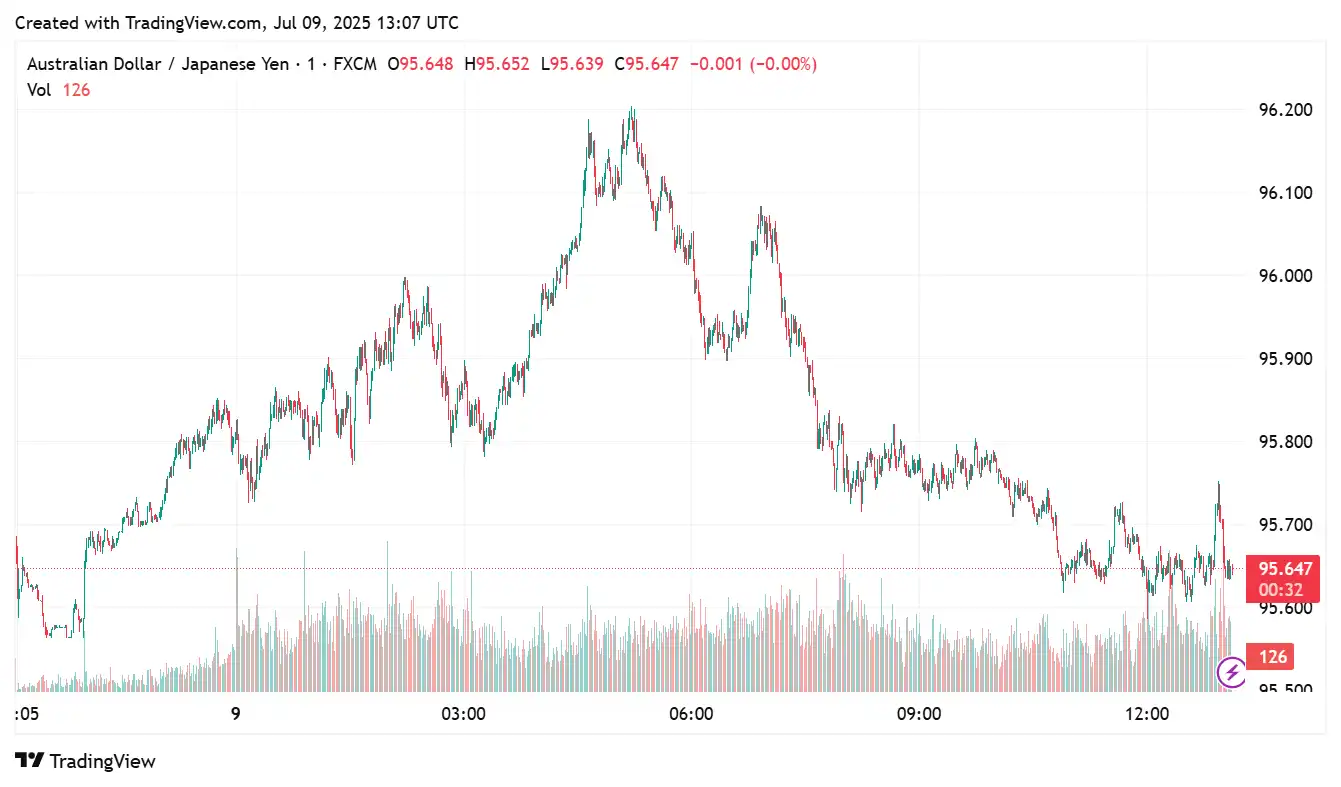
NZD/USD Rebounds Following RBNZ Rate Decision
NZD/USD edged higher around 0.6005 following the Reserve Bank of New Zealand (RBNZ) interest rate decision to keep the Official Cash Rate (OCR) steady at 3.25% after concluding the June policy meeting on Wednesday. According to the minutes of the RBNZ interest rate meeting, the case for maintaining the interest rate at the July meeting emphasised the high level of uncertainty and the advantages of waiting until August, given short-term inflation risks. The committee also stated that risks to the global outlook remain significant. It further noted that while the economic outlook remains highly uncertain, with spare productive capacity in the economy and decreasing domestic inflation pressures, headline inflation is expected to stay within the target range and return to around 2 per cent by early 2026. Additional data on the pace of New Zealand's economic recovery, the persistence of inflation, and the effects of tariffs will influence the subsequent trajectory of the official cash rate.
On Wednesday, the National Bureau of Statistics of China reported that China's Consumer Price Index (CPI) rose by an annual rate of 0.1% in June, after a decline of 0.1% in May, surpassing the forecast of 0%. Chinese CPI inflation was -0.1% month-on-month in June, compared to a 0.2% decrease in May. China's Producer Price Index (PPI) fell by 3.6% year-on-year in June, following a 3.3% decline in May. The data came in lower than the market consensus of 3.2%. Rising concerns over the persistent deflationary pressure in China, driven by sluggish domestic demand and tariff threats, could dampen the market sentiment around the China-proxy Kiwi.
On the greenback front, traders await the release of the Federal Open Market Committee (FOMC) Minutes, due today. On Tuesday, US President Donald Trump announced he will impose a 50% tariff on imported copper and suggested that more sector-specific levies are expected. Trump also indicated he would soon introduce tariffs "at a very, very high rate, like 200%," on pharmaceutical imports. US Treasury Secretary Scott Bessent stated that the United States has already collected around $100 billion in tariff revenue this year and could see that figure rise to $300 billion by the end of 2025, driven by Trump's increasing trade measures. Trump reiterated his threat of a 25% tax on imports from Japan and South Korea and sent a series of letters to world leaders warning of levies from August 1. Additionally, Trump imposed 25% tariffs on Malaysia, Kazakhstan, and Tunisia, while South Africa would face a 30% tariff, and Laos and Myanmar would encounter a 40% levy. Other countries affected included Indonesia, with a 32% rate, Bangladesh, with 35%, and Thailand and Cambodia, with duties of 36%.
Broader market sentiment around the RBNZ interest rate decision and FOMC Minutes will influence the NZD/USD exchange rate.
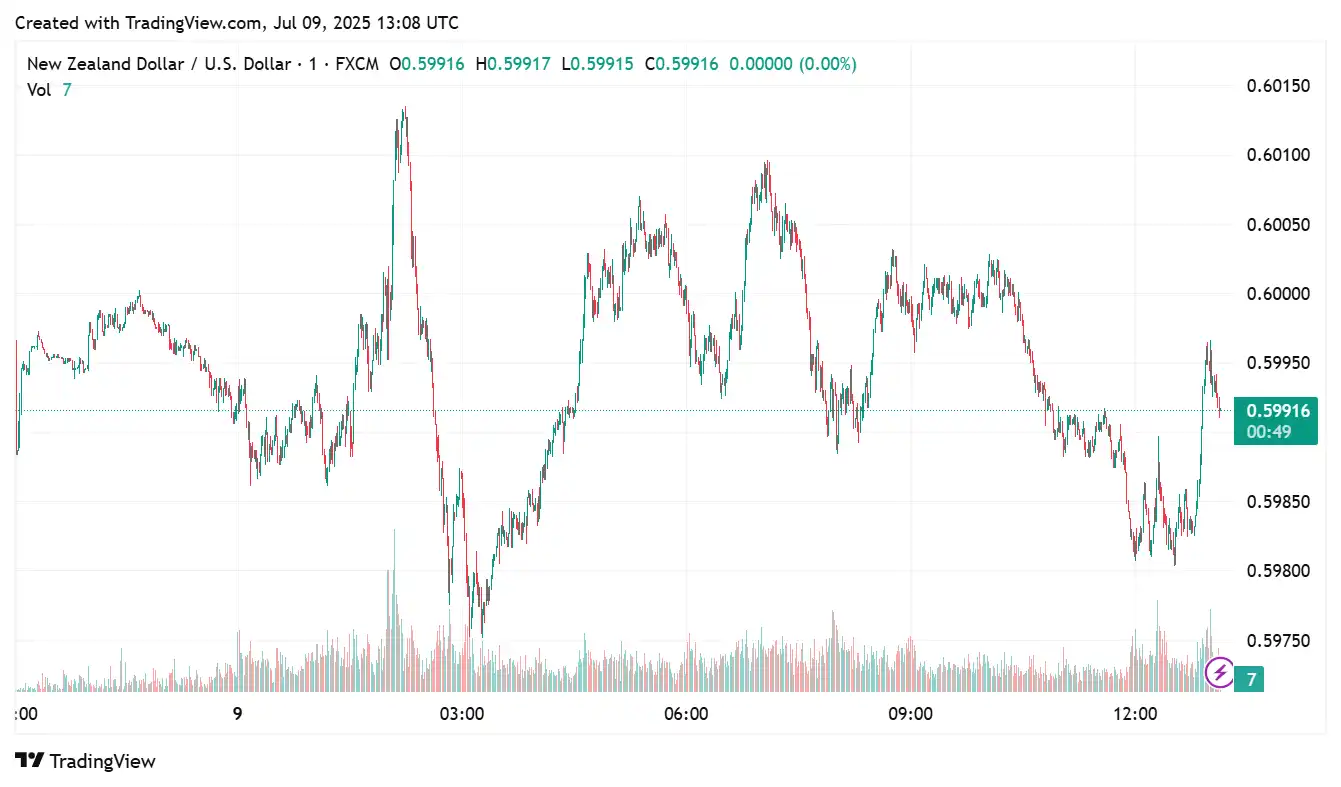
EUR/CAD Gains Amid EU-US Deal Optimism
EUR/CAD edged higher near 1.6035, amid rising optimism around the Eurozone-US trade negotiations, despite renewed tariff threats from US President Donald Trump continuing to unsettle markets. On Tuesday, Trump stated that the European Union (EU) will probably receive a letter by Thursday outlining its new US tariff rate. He also mentioned that the US president described the EU's stance as shifting from being very tough to very friendly. These comments came as the EU makes increased efforts to avoid broad reciprocal tariffs on US exports, initially set to take effect on Wednesday but now postponed to August 1. The Swedish finance minister criticised the US proposal as very bad, but EU officials remain hopeful for a deal. Meanwhile, the US president indicated that a tariff letter will be sent to the Eurozone within days. Uncertainty around tariffs and the risk of a trade war could weaken the euro in the short term. ECB policymaker Boris Vujcic, known for his hawkish views, said the ECB shouldn't be overly worried about a temporary inflation shortfall and shouldn't rush to change interest rates. He added that the ECB can wait, as upcoming data will guide future decisions.
On the data front, Germany's trade surplus increased by EUR 18.4 billion in May, rising from EUR 15.8 billion in April, defying expectations of a slight decline to EUR 15.5 billion. This was mainly due to a larger-than-expected decrease in imports, indicating slower domestic demand. Meanwhile, Eurozone retail sales fell by 0.7% in May on Monday, marking the largest decline in nearly two years and suggesting US tariffs and economic uncertainties in the Eurozone are negatively affecting consumer confidence. The German Statistics Office reported that industrial production grew by 1.2% in May, contrary to forecasts of stagnation and following a 1.6% decline in April. Additionally, the French trade deficit reached €7.8 billion in May, up €0.4 billion from April, with exports decreasing by €0.2 billion to €48.9 billion and imports remaining steady at €56.7 billion.
In Canada, US tariff uncertainty and potential new tariffs on copper imports may pressure the Loonie, as Canada is a major copper producer. The latest Ivey Purchasing Managers Index (PMI) surprised to the upside, providing a glimpse of resilience in Canada's economic activity. The headline PMI rose to 53.3 in June, up sharply from 48.9 in May, marking the highest reading in four months and signalling renewed expansion. Nonetheless, Canadian Prime Minister Mark Carney and Trump are scheduled to reach a trade agreement by July 21. Any positive developments regarding the US-Canada trade deal could help limit the CAD's losses.
Investors will observe the Bank of Canada's (BoC) monetary policy outlook, Canadian labour market data, and FOMC Minutes, which will influence the EUR/CAD exchange rate.
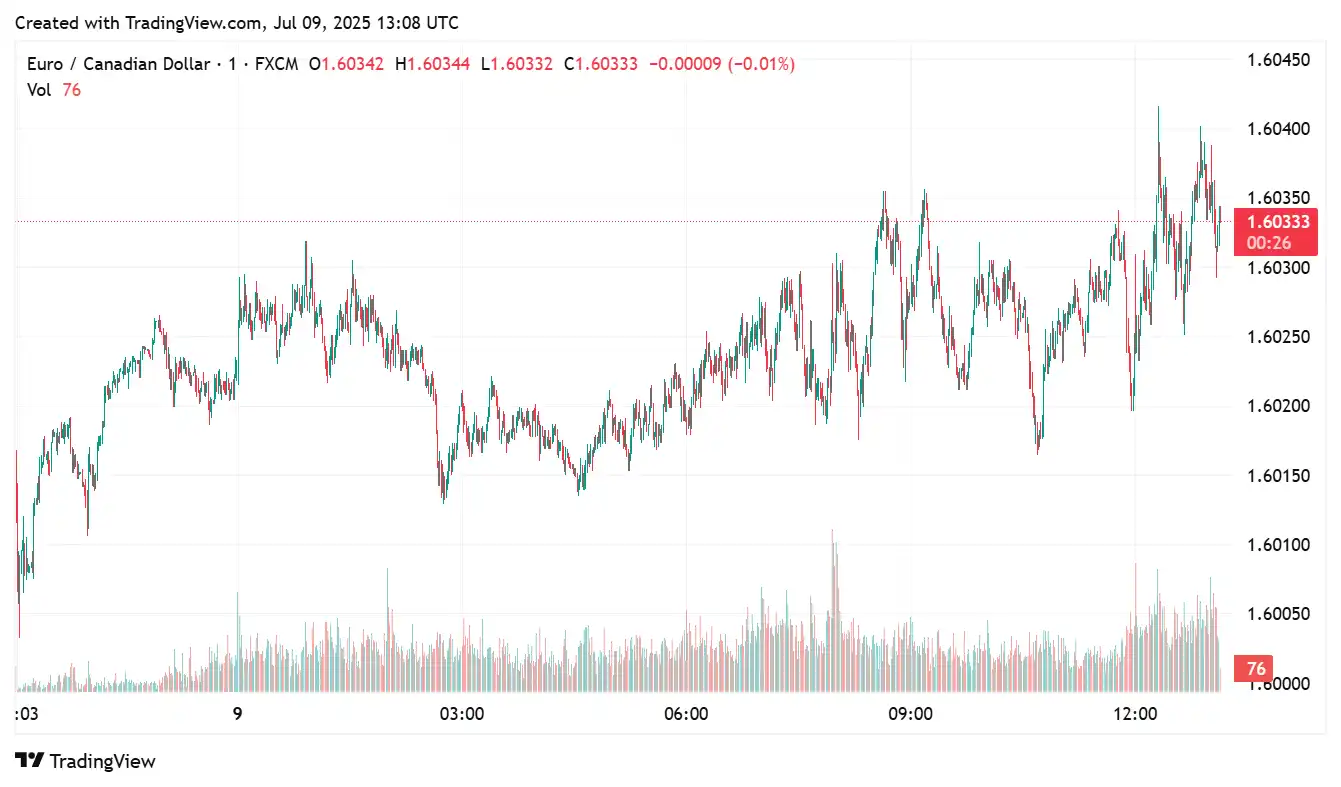
Stay Ahead in the Currency Game
Whether you're a daily FX trader or handle international transactions regularly, our 'Currency Pulse' newsletter delivers the news you need to make more informed decisions. Receive concise updates and in-depth insights directly in your LinkedIn feed.
Subscribe to 'Currency Pulse' now and never miss a beat in the currency markets!
Ready to act on today’s insights? Get a free quote or give us a call on: +44 (0)20 7740 0000 to connect with a dedicated portfolio manager for tailored support.
Important Disclaimer: This blog is for informational purposes only and should not be considered financial advice. Currency Solutions does not take into account the investment objectives, financial situation, or specific needs of any individual readers. We do not endorse or recommend any specific financial strategies, products, or services mentioned in this content. All information is provided “as is” without any representations or warranties, express or implied, regarding its accuracy, completeness, or timeliness.




